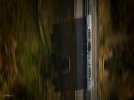Greetings Pilots,
I have never used nd filters before, I'm not a pro photographer, I'm more of a pilot and the video has always been secondary but with my new Classic I really want to take advantage of the great camera.
I understand nd filters somewhat, and how they help to keep the Shutter speed closer to the sweet spot, but I'm certainly no expert and would appreciate your advice.
I always fly with camera settings in Auto mode and mostly that works perfectly, mostly.
I did a test flight using the nd 16 filter vs no filter with the sun behind some clouds, in that order.
Please have a look at the video link and let me hear your opinions and advice
I have never used nd filters before, I'm not a pro photographer, I'm more of a pilot and the video has always been secondary but with my new Classic I really want to take advantage of the great camera.
I understand nd filters somewhat, and how they help to keep the Shutter speed closer to the sweet spot, but I'm certainly no expert and would appreciate your advice.
I always fly with camera settings in Auto mode and mostly that works perfectly, mostly.
I did a test flight using the nd 16 filter vs no filter with the sun behind some clouds, in that order.
Please have a look at the video link and let me hear your opinions and advice










